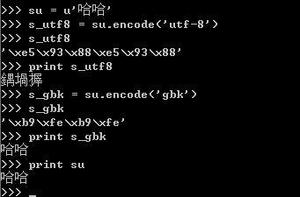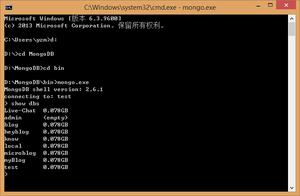python 从入门到实战(基础知识复习和回顾)

原创:叫我詹躲躲 来源:掘金 链接:juejin.im/post/5f05e1…
1编写第一个程序(python 3)
print('hello world!')2.查看python 版本号
python -v3.使用变量
message = 'hello world!' print(message)
4.字符串
name = 'jetty'print(name.title()) #Jetty 首字母大写
print(name) jetty
name.upper() #JEETY 转大写
name.lower() #jetty 转小写
5.合并拼接字符串
first_name = 'hongzhu'last_name = 'zhan'
full_name = last_name +" "+ first_name
print(full_name) zhan hongzhu
6.使用制表来添加空白
language = 'pythonnJavascriptnCnRust'print(language)
打印
python
Javascript
C
Rust
7.删除空白
_blank = ' python 'print(_blank.rstrip()) #去除右侧空白
print(_blank.strip()) #去除两侧空白
print(_blank.lstrip()) #去除左侧空白
8.变量类型
num = 2.340print(int(num)) #整型 2
print(float(num)) #浮点型 2.34
9.列表
color = ['red','green','yellow','pink']
#访问元素
print(color[0]) ##red
#修改
color[0] = 'black'
#添加元素
color.append('orange')
#插入元素
color.insert(0,'blue') #插到第一位
print(color)
#删除元素
del color[0] #删除当前元素
color.pop() #删除数组最后一个元素
color.remove('red') #删除红色
10 组织列表
10.1排序列表
num_list = [1,2,3,4,2,1,3,1,2]num_list.sort()
print(num_list) [1, 1, 1, 2, 2, 2, 3, 3, 4]
10.2临时排序
num_list = [1,2,3,4,2,1,3,1,2]print(sorted(num_list)) [1, 1, 1, 2, 2, 2, 3, 3, 4]
10.3reverse 反序
num_list = [1,2,3,4,2,1,3,1,2]num_list.reverse()
print(num_list) [2, 1, 3, 1, 2, 4, 3, 2, 1]
10.4列表的长度
num_list = [1,2,3,4,2,1,3,1,2]print(len(num_list)) 9
11 遍历列表
num_list = [1,2,3,4,2,1,3,1,2]for i in num_list:
print(i,end=" ") #一行显示
12.使用函数遍历
num_list = [1,2,3,4,2,1,3,1,2]for i in range(len(num_list)):
print(num_list[i],end=" ")
13.乘方运算
squares = []for i in range(1,6):
squares.append(i**2)
print(squares) [1, 4, 9, 16, 25]
14.内置函数
num_list = [1,2,3,4,2,1,3,1,2]print(max(num_list)) 4
print(min(num_list)) 1
print(sum(num_list)) 19
15.列表解析
squeres = [value**2for value in range(1,11)]print(squeres) [1, 4, 9, 16, 25, 36, 49, 64, 81, 100]
16.练习示例
16.1 1-50奇数的和
odd_number =[]for i in range(1,11,2):
odd_number.append(i)
print(sum(odd_number))
16.2 3-90 3的倍数
three_nmu = []for i in range(3, 91):
if (i % 3==0):
three_nmu.append(i)
print(three_nmu)
16.3 1-10 的立方
squares = []for i in range(3,11):
squares.append(i**3)
print(squares)
16.4 1-10 的立方列表解析
squares = [i**3for i in range(3,11)]print(squares)
17 列表切片
num_list = [1,2,3,4,2,1,3,1,2]
print(num_list[0:5]) [1, 2, 3, 4, 2] #从第一个开始取值到第五位
print(num_list[:5]) [1, 2, 3, 4, 2] #默认会从第一个开始取值
print(num_list[5:]) [1, 3, 1, 2] #取后面的4位
18 元组
dimensions = (100,300)print(dimensions[0]) 100
for i in dimensions:
print(i) 100300
19 if 语句
num_list = [1, 2, 3, 4, 2, 1, 3, 1, 2]for i in num_list:
if i == 2:
print(i)
20 !=
num_list = [1, 2, 3, 4, 2, 1, 3, 1, 2]for i in num_list:
if i != 2:
print(i)
21 and
num_list = [1, 2, 3, 4, 2, 1, 3, 1, 2]for i in num_list:
if i >=1and i <=2:
print(i)
22 字典
alien = {'color':0,'points':1}print(alien['color']) ##color
23 修改字典
alien = {'color':0,'points':1}alien['color'] = 'red'
print(alien) {'color': 'red', 'points': 1}
24 删除字典
alien = {'color':0,'points':1}del alien['color']
print(alien)
25 案例练习
25.1创建两个人的字典,存储在列表,遍历列表,输出列表
people_nums1 = {'name':'jetty','name1':'jack'}people_nums2 ={'name':'kitty','name1':'james'}
peoples = [people_nums1,people_nums2]
for i in peoples:
print(i)
26.用户输入和while循环
ipt = input('你是小黄么?1(true) or 2(false)?')if ipt =='1':
print('是本人')
else:
print('不是本人')
27 % //运算符
print(4 % 2) 0print(4 // 2) 2
28 while运算符
count = 0arr = []
while count < 20:
for j in range(1, 100):
if j % 11 == 0:
count = count+1
arr.append(j)
print(arr)
29 函数
#简单求和defnum_sum(arr):
result =0
for i in arr:
result =result+i
return result
print(num_sum([1,2,3,4])) 10
30 函数默认值
defnum_sum(arr=[1,2,3]): result =0
for i in arr:
result =result+i
return result
print(num_sum()) 6
31 传递任意数量的实参
defmake_prize(*top):return top
print(make_prize(1))
print(make_prize(1,2,3))
print(make_prize(1,3,4,5))
print(make_prize(1,1,1,1,1))
#返回
(1,)
(1, 2, 3)
(1, 3, 4, 5)
(1, 1, 1, 1, 1)
32 导入函数
# 随机数import random
print(random.randint(1,19))
33 类
classDog():def__init__(self,name,age):
self.name =name
self.age = age
defsit(self):
print(self.name+''+self.age)
dog = Dog('jeety',24)
print(dog.name)
34 类 汽车里程表
classCar():def__init__(self,make,model,year):
self.make = make
self.model = model
self.year = year
defgetCarName(self):
print(self.model)
car = Car('audi','ad4',2016)
print(car.make)
35 子类方法 init()
classCar():def__init__(self,name):
self.name = name
classElastic(Car):
def__init__(self, name):
super().__init__(name)
myTesla = Elastic('tesla')
print(myTesla.name)
36 class实例
classCar():def__init__(self,make,name,color):
self.make = make
self.name = name
self.color = color
defgetCarName(self):
print('获取车的名字为'+self.name+'获取汽车的颜色'+self.color)
classBatery():
def__init__(self,batery='60'):
self.batery = batery
defdiscribe_batery(self):
print('This car has'+str(self.batery)+'batery')
classElatrity(Batery):
def__init__(self, batery):
super().__init__(batery)
self.batery = Batery()
elatrity = Elatrity('100')
print(elatrity.discribe_batery())
37 文件和异常
f = open('file.txt',mode="w",encoding='utf-8')print(f)
f.write('叫我詹躲躲n')
f.write('叫我詹躲躲1n')
f.close()
38 将数据存入json文件
import jsonnumbers = [1,2,23,3,4,5,6,7,87]
filename = 'numbers.json'
with open(filename,'w') as f_obj:
json.dump(numbers,f_obj)
39 保存和读取用户生成的数据
import jsonusername = input('存储输入的数据')
filename = 'numbers.json'
with open(filename,'w') as f_obj:
json.dump(username,f_obj)
40 读取用户输入的信息
import jsonfilename = 'numbers.json'
with open(filename) as f_obj:
username = json.load(f_obj)
print('Welcome back',username)
41 输入和合并数据
import jsonfilename = 'numbers.json'
try:
with open(filename) as f_obj:
username = json.load(f_obj)
except FileNotFoundError:
username = input('存储输入的数据')
with open(filename,'w') as f_obj:
json.dump(username,f_obj)
else:
print('Welcome back',username)
42 封装成为一个函数
import jsondefget_username():
filename = 'numbers.json'
try:
with open(filename) as f_obj:
username = json.load(f_obj)
except FileNotFoundError:
returnNone
else:
return username
defget_greeting():
username = get_username()
if username:
print('Welcome back',username)
else:
username = input('存储输入的数据')
filename = 'numbers.json'
with open(filename,'w') as f_obj:
json.dump(username,f_obj)
print('Welcome back',username)
get_greeting()
43 文件读取
f = open('index.txt',encoding='utf-8')s = f.read()
print(s)
f.close()
44 文件写入
f = open('index.txt',mode="w",encoding='utf-8')f.write('叫我詹躲躲n')
f.write('叫我詹躲躲1n')
f.close()
43 第三方库安装和使用
import randomrandom.randint() #随机数
import jieba #结巴
import wordcloud #词云
jieba.lcut('分割中文词语的序列') #分割中文词语的序列
word_cloud = wordCloud(font_path='msyh.ttc').generate('分割中文词语') #生成词云对象
word_cloud.to_file('123.png') #保存到图片
44 python 里面的类和对象
#面向对象编程classPerson:
def__init__(self,name,sex,birthday):
self.name = name
self.sex = sex
self.birthday = birthday
defsay(self,word):
print(f'{self.name}说:"{word}"')
zhang_san = Person('张三','男','2020202')
zhang_san.say('12121')
45.输出 %占位符
lastname = 'hello'firstname = 'world'
print('我的名字是%s %s' %(lastname,firstname))
46.常用的格式化字符
%c #字符%s #通过str来格式化
%i #有符号十进制整数
%d #有符号十进制整数
%u #无符号十进制整数
%o #八进制整数
%x #十六进制整数(小写字母)
%e #索引符号(小写e)
%E #索引符号(大写E)
%f #浮点实数
%g #%f和%e的简写
%G #%f和%E的简写
47 格式化的其他方式 format
name = '老夫子'age = 28
print('姓名:{},年龄{}'.format(name,age))
#姓名:老夫子,年龄28
48 .匿名函数
48.1lambda 参数1,参数2,参数3:表达式
#特点:#1.使用lambda关键字创建函数
#2.没有名字的函数
#3.匿名函数冒号后面的表达式有且只有一个,是表达式不是语句
#4.自带return
48.2.lambda 示例1
defcomputer(x,y):#计算两数和
return x+y
M = lambda x,y:x+y
print(M(1,2))
48.3.lambda 示例1
result = lambda a,b,c:a*b*cprint(result(12,121,1))
48.4 lambda 三元表达式模拟
age = 15print('可以参军'if age>18else'继续上学')
#直接调用
result = (lambda x,y:x if x>y else y)(2,5)
49.递归函数
#阶乘函数deffactorial(n):
if n==1:
return1
else:
return n*factorial(n-1)
pass
print(factorial(3))
49.1 递归案例 模拟实现 树形结构的遍历
import os 文件操作模块deffindFile(file_path):
listRs = os.listdir(file_path) 得到该路径所有的文件夹
for fileItem in listRs:
full_path = os.path.join(file_path,fileItem)
if os.path.isdir(full_path): 判断是否为文件夹
findFile(full_path)
else:
print(fileItem)
pass
pass
else:
return
findFile('F:\7.代码学习')
50.python的内置函数
abs(-27) #绝对值round(21.1123) #浮点近似值
pow(2,3) #幂 2**3
divmod(10,3) # 商余
max(1,2,3,4) #最大值
min(1,2,3,4) #最小值
sum(1,2,3,4) #求和
eval() #动态执行表达式
51.类型转换函数
int #整型float #浮点型
str #字符类型
ord #返回对应字符的ASCII
chr #数字转字符 ASCII
bool #boolean
bin # 转换二进制
hex #转换为十六进制
oct #八进制
list #元祖转列表
tuple #元祖
dict #创建字典
bytes #转为字节
52.可迭代参数 all
#all 用于判定给定的可迭代参数中的所有元素是否都为TRUE,如果是返回TRUE,否则返回FALSE,除了0,空,False 外都算TRUE
defall(iterable):
for ele in iterable:
ifnot ele:
returnFalse
returnTrue
li = [1,2,3,4,5,6,False]
print(all(li)) ##False
53 可迭代参数 any
#全部为false,返回falsedefany(iterable):
for ele in iterable:
if ele:
returnFalse
returnTrue
li = [0,False,'']
print(any(li)) ##False
54.enumerate 列出遍历数据和下标
li = ['a','b','c']for index,item in enumerate(li,7):
print(index,item)
#改下标
7 a
8 b
9 c
55.set集合 不支持索引和切片,无序不重复
55.1.创建集合1
set1 = {'1','2'}set2 = {'11','1'}
#添加 add
set1.add('3')
#清空 clear()
set1.clear()
#取差集 difference
set1.difference(set2) ##set1取set1中有的
#取交集
set1.intersection(set2)
#取并集
set1.union(set2)
set1 | set2
#末尾移除
set1.pop()
#指定移除
set1.discard(3)
#更新 update 合并一起去重
set1.update(set2)
55.2 练习题1 三组数据求和
1-10,20-30,35-40defthreeSum(a1,a2,a3):
return sum(a1+a2+a3)
a1 = list(range(1,11))
a2 = list(range(20,31))
a3 = list(range(35,41))
print(threeSum(a1,a2,a3))
55.3练习题2 大小和尚多少个
defcomputers():for i in range(1,101):
for j in range(1,34):
if i+j==100and3*j+i/3 ==100:
print('大和尚有{}个,小和尚有{}个'.format(j,i))
pass
computers()
#大和尚有25个,小和尚有75个
55.4 练习题3 找出独一无二的数据
li = [1,1,1,2,2,2,2,3,2,2,3,4,2,1,1]deffindUnionNumber(li):
for item in li:
if li.count(item)==1:
return item
pass
print(findUnionNumber(li))
56.字典统计每个元素的次数
dict ={}for key in li:
dict[key] = dict.get(key,0)+1
print(dict)
56.1.collection包下Counter类统计
from collections import Countera = [1, 2, 3, 1, 1, 2]
result = Counter(a)
print(result)
56.2.pandas包下的value_counts方法统计
import pandas as pda = pd.DataFrame([[1,2,3],
[3,1,3],
[1,2,1]])
result = a.apply(pd.value_counts)
print(result)
56.3.利用set找出独一无二的数据
li = [1,2,3,3,2,3,4,4,5,1,2,1]defuniqueNum(li):
set1 = set(li)
for i in set1:
li.remove(i)
set2 = set(li)
for j in set2:
set1.remove(j)
return set1
print(uniqueNum(li))
57 面向对象编程 oop
#面向过程编程 根据业务从上到下开始编程#类的结构
#类名 属性 方法
classPeople:
name = 'zhan',
age = 20,
defeat(self):
print('正在吃饭')
#创建对象
people = People()
people.eat()
在类的内部,使用def定义的为实例方法,第一个参数为self,实例方法归实例所有
57.1 类的实例属性添加
classPeople: name = 'zhan',
age = 20,
defeat(self):
print('正在吃饭')
#创建对象
people = People()
people.eat()
#添加属性
people.name2 = 'zhan'
people.age2 = 22
57.2 类的__init__()方法
classPeople:# 初始化的操作,实例属性,自动执行
def__init__(self):
self.name = 'zhan'
self.age = 20
defeat(self):
print('正在吃饭')
#创建对象
people = People()
people.eat()
57.3 类的__init__()使用参数
classPeople:# 初始化的操作,实例属性,自动执行
def__init__(self, name, age):
self.name = name
self.age = age
defeat(self,food):
print(self.name+food)
#创建对象
people = People('叫我詹躲躲', 20)
people.eat('正在吃饭')
people.eat('洗澡')
people.eat('跑步')
57.4 理解类的self
#类似于js里面的thisclassPerson:
defeat(self):
print(id(self))
pass
pass
person = Person()
person.eat()
print(id(person))
#self和对象指向同一个内存地址,self就是对象的引用
# <__main__.Person object at 0x0000020864815CC0>
58 魔术方法
#__init__ :初始化实例属性# __str__ :自定义对象的格式
# __new__ :对象实例化
classAnimal:
def__str__(self):
return'3213213123123'
pass
pass
animal = Animal()
print(animal)
classAnimal:
def__str__(self):
return'3213213123123'
pass
pass
def__new__(cls,*args,**kwargs):
print("----new执行---")
return object.__new__(cls) 真正创建对象实例的
pass
animal = Animal()
print(animal)
#__new__ 和__init__的区别
#__new__ 类的实例化方法,必须返回实例,否则创建不成功
#__init__数据属性的初始化工作,认为是实例的构造方法,接受实例化self并对其进行构造
#__new__ 至少一个参数是cls,代表要实例化的类
#__new__ 执行要比__init__早
59 案例练习 —— 决战紫禁之巅
# 属性:# name:玩家名称
# blood:血量
# 方法:
# tong() 捅一刀,掉10滴血
# kanren() 砍一刀掉15滴血
# chiyao() 补血10滴血
# __str__打印玩家的状态
classRole:
def__init__(self,name,blood):
self.name = name
self.blood = blood
pass
砍人
deftong(self,enemy):
enemy.blood -=10
info = '【%s】捅了【%s】一刀'%(self.name,enemy.name)
print(info)
pass
砍人
defkanren(self,enemy):
enemy.blood -=15
info = '【%s】砍了【%s】一刀'%(self.name,enemy.name)
print(info)
pass
吃药
defchiyao(self):
self.blood +=10
info = '【%s】吃了一口药,增加10滴血'%(self.name)
print(info)
pass
def__str__(self):
return'%s还剩下%s的血量'%(self.name,self.blood)
xmcx = Role('西门吹雪',100)
ygc = Role('叶孤城',100)
whileTrue:
if xmcx.blood<=0or ygc.blood<=0:
break
print('*********************')
xmcx.tong(ygc)
xmcx.kanren(ygc)
print('*********************')
ygc.tong(xmcx)
ygc.chiyao()
print('*********************')
print(xmcx)
print(ygc)
"""
*********************
【西门吹雪】捅了【叶孤城】一刀
【西门吹雪】砍了【叶孤城】一刀
*********************
【叶孤城】捅了【西门吹雪】一刀
【叶孤城】吃了一口药,增加10滴血
*********************
西门吹雪还剩下50的血量
叶孤城还剩下25的血量
*********************
【西门吹雪】捅了【叶孤城】一刀
【西门吹雪】砍了【叶孤城】一刀
*********************
【叶孤城】捅了【西门吹雪】一刀
【叶孤城】吃了一口药,增加10滴血
*********************
西门吹雪还剩下40的血量
叶孤城还剩下10的血量
*********************
【西门吹雪】捅了【叶孤城】一刀
【西门吹雪】砍了【叶孤城】一刀
*********************
【叶孤城】捅了【西门吹雪】一刀
【叶孤城】吃了一口药,增加10滴血
*********************
西门吹雪还剩下30的血量
叶孤城还剩下-5的血量
"""
60 实例练习1 水果类
classFruit:def__init__(self,name,color):
self.name = name
self.color = color
defshowColor(self):
print('%s的颜色为%s'%(self.name,self.color))
apple = Fruit('苹果','红色').showColor()
orange = Fruit('橘子','黄色').showColor()
watermelen = Fruit('西瓜','绿色').showColor()
61 验证self 就是实例本身
classCkeckSelf:def__str__(self):
print(id(self))
pass
CkeckSelf().__str__()
selfObj = CkeckSelf()
print(id(selfObj))
62 定义animal类,输出所有的属性
classAnimal:def__init__(self, color, name, age):
self.color = color
self.name = name
self.age = age
defrun(self):
print('%s在跑步'%(self.name))
pass
defeat(self):
print('%s在吃东西' %(self.name))
pass
def__str__(self):
return'%s岁的%s的%s'%(self.age,self.color,self.name)
cat = Animal('黑色','小猫',2)
dog = Animal('白色','小狗',3)
cat.run()
dog.run()
print(cat)
print(dog)
"""
小猫在跑步
小狗在跑步
2岁的黑色的小猫
3岁的白色的小狗
"""
64 简易的学生管理系统
1、显示所有学生信息2、新建学生信息
3、查询学生信息
4、修改学生信息
5、删除学生信息
0、退出系统
student_data = [ {
'id': 123456,
'name': 'Tom',
'sex': '男',
'address': '迪士尼'
},
{
'id': 123457,
'name': 'Jerry',
'sex': '女',
'address': '伦敦'
},
]
64.1美化显示
defbeauty_list(datas):for index, student in enumerate(datas):
print(f'序号:{index}', end="t")
print(f'姓名:{student["name"]}', end="t")
print(f'性别:{student["sex"]}', end="t")
print(f'地址:{student["address"]}')
64.2输入名字
definput_name():whileTrue:
name = input('输入名字:').strip()
if name:
return name
else:
continue
64.3选择性别
defchoose_sex(): print('1(男) | 2(女)')
n = input('选择性别')
if n == '1':
return'男'
else:
return'女'
64.4显示所有学生信息
defshow_all(): beauty_list(student_data)
64.5新建学生信息
defcreate_student(): sid = random.randint(1000, 10000)
name = input_name()
sex = choose_sex()
address = input('地址:')
student = {
'id': sid,
'name': name,
'sex': sex,
'address': address
}
student_data.append(student)
64.6查询学生信息
deffind_student(): name = input_name()
for i in student_data:
if i['name'] == name:
print(i)
return
else:
print('无该学生任何信息')
64.7修改学生信息
defedit_student(): name = input_name()
for student in student_data:
if student['name'] == name:
print(student)
student['name'] = input_name()
student['sex'] = choose_sex()
student['address'] = input('地址:')
return
else:
print('查无此人')
64.8删除学生信息
defdelete_student(): name = input_name()
for student in student_data:
if student['name'] == name:
student_data.remove(student)
return
else:
print('查无此人')
whileTrue:
print('''
********************
欢迎使用学生管理系统
1、显示所有学生信息
2、新建学生信息
3、查询学生信息
4、修改学生信息
5、删除学生信息
0、退出系统
********************
'''
)
op = input('请输入序号:')
if op == '1':
print(student_data)
show_all()
elif op == '2':
create_student()
elif op == '3':
find_student()
elif op == '4':
edit_student()
elif op == '5':
delete_student()
else:
print('退出系统')
break
本文使用 mdnice 排版
原创:叫我詹躲躲 来源:掘金 链接:juejin.im/post/5f05e1…
以上是 python 从入门到实战(基础知识复习和回顾) 的全部内容, 来源链接: utcz.com/a/31173.html





